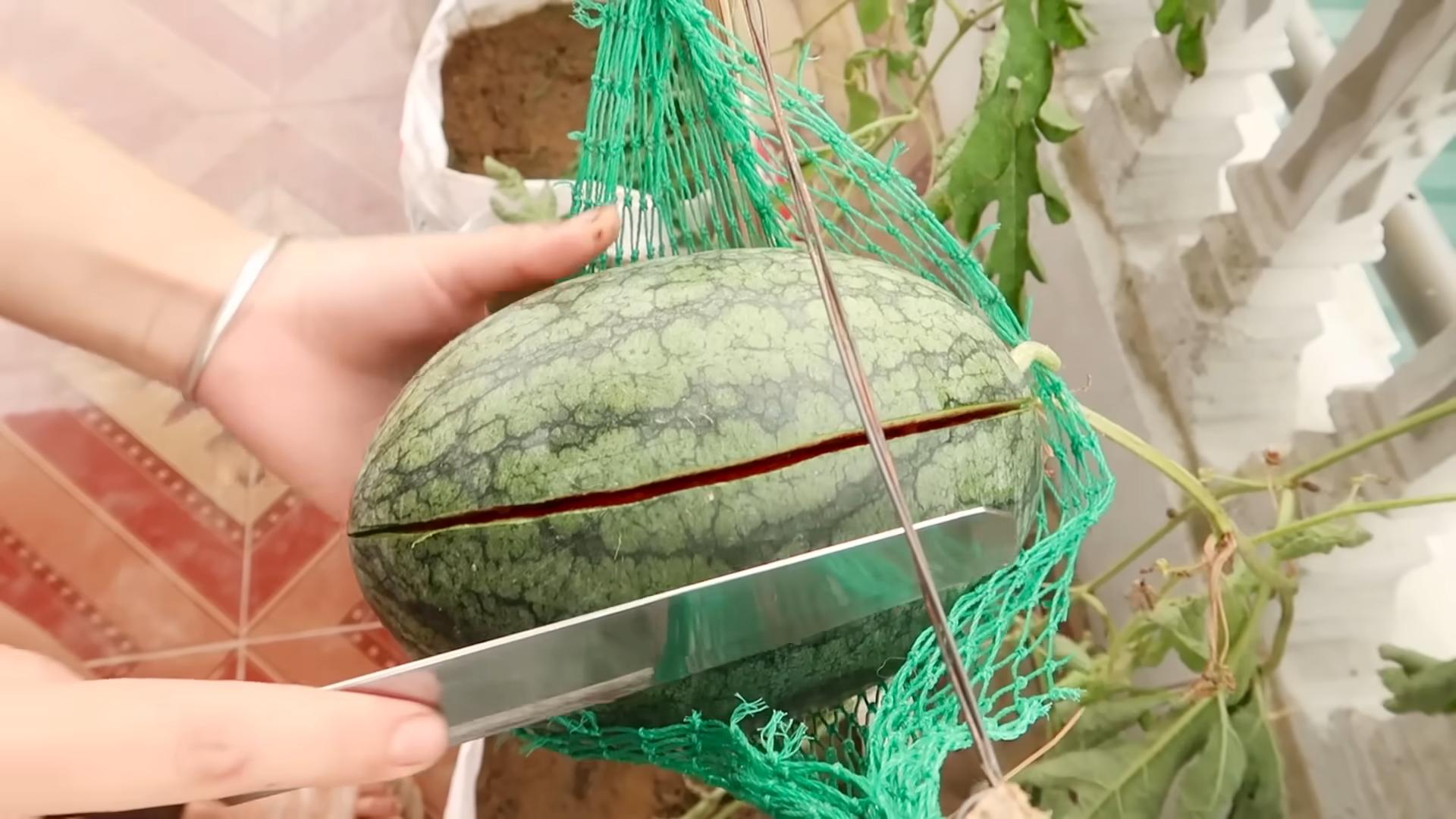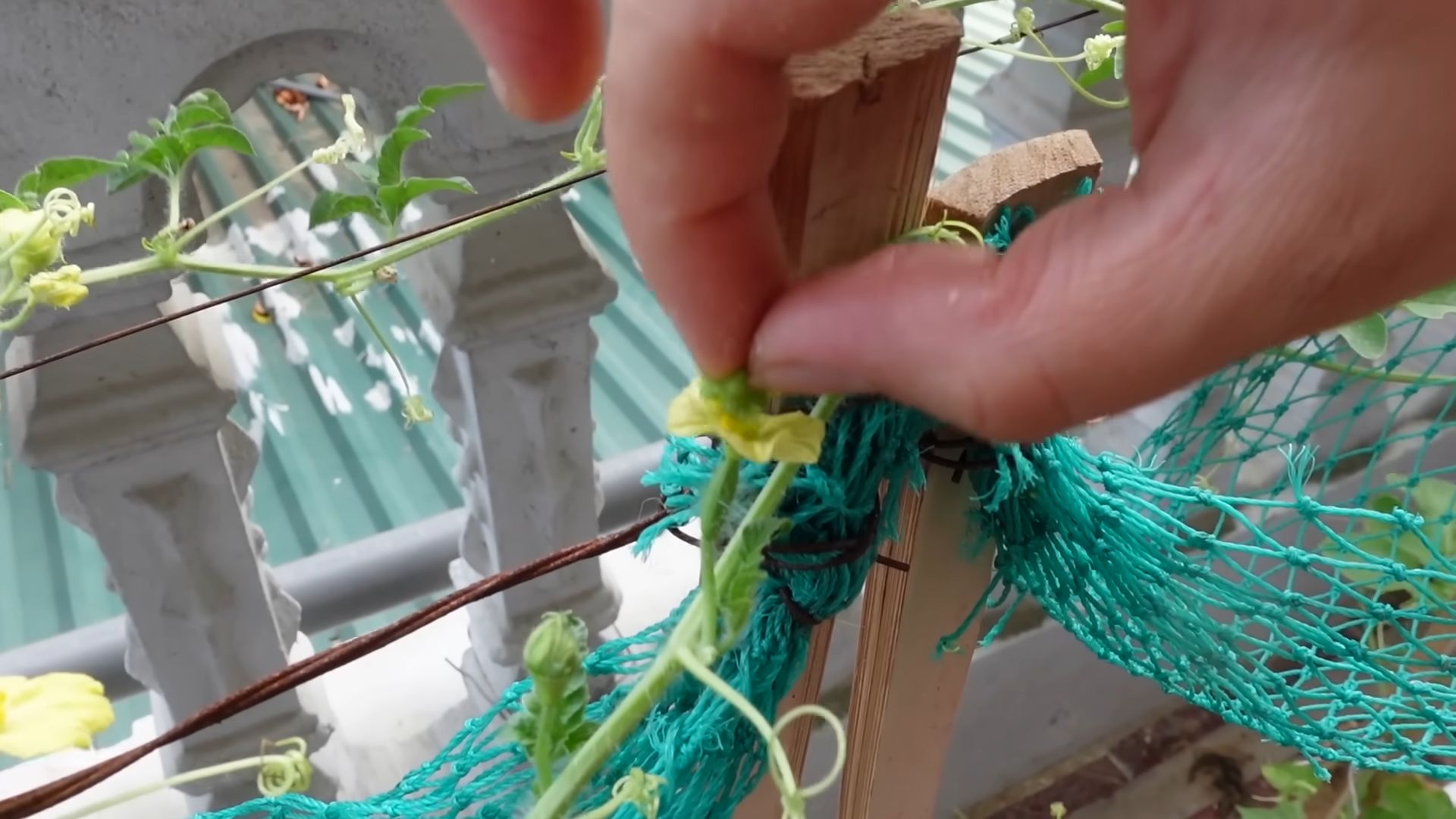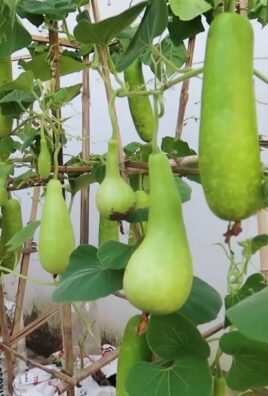Grow Watermelon at Home – sounds like a summer dream, right? Imagine biting into a juicy, homegrown watermelon, bursting with flavor and sweetness, knowing you nurtured it from seed to fruit. Forget those bland, store-bought melons! This isn’t just about gardening; it’s about creating a little slice of summer paradise right in your backyard.
Watermelons have a rich history, dating back thousands of years to Africa, where they were prized for their hydrating properties. Over time, they spread across the globe, becoming a symbol of summer celebrations and refreshing treats. But you don’t need a sprawling farm to enjoy this iconic fruit.
Many people shy away from growing watermelons, thinking it’s too difficult or requires too much space. But I’m here to tell you that with a few clever tricks and DIY hacks, you can absolutely grow watermelon at home, even in a small garden or container! This article is packed with easy-to-follow tips and techniques that will empower you to cultivate your own delicious watermelons. We’ll cover everything from choosing the right variety for your climate to maximizing your yield with simple, DIY solutions. So, get ready to roll up your sleeves and embark on a rewarding gardening adventure. Let’s bring the taste of summer to your table!

Grow Your Own Juicy Watermelons: A DIY Guide
Hey there, fellow gardening enthusiasts! Ever dreamt of biting into a sweet, homegrown watermelon on a hot summer day? Well, dream no more! Growing your own watermelons might seem daunting, but trust me, with a little patience and this guide, you can totally do it. I’m going to walk you through everything you need to know, from choosing the right variety to harvesting your prize-winning melon. Let’s get started!
Choosing the Right Watermelon Variety
First things first, you need to pick the perfect watermelon variety for your climate and garden size. Not all watermelons are created equal! Some are better suited for shorter growing seasons, while others need tons of space to sprawl.
* **Consider your climate:** If you live in a region with a short growing season, opt for faster-maturing varieties like ‘Sugar Baby’ (around 75 days) or ‘Bush Sugar Baby’ (perfect for smaller gardens). For longer growing seasons, you can explore larger varieties like ‘Charleston Gray’ (80-90 days) or ‘Crimson Sweet’ (85 days).
* **Think about space:** Watermelons are vines that can spread quite a bit. If you have limited space, consider bush varieties or train your vines vertically on a trellis.
* **Flavor preferences:** Do you prefer a super sweet, red-fleshed watermelon? Or maybe a more subtle, yellow-fleshed one? Research different varieties and choose one that tickles your taste buds. Some popular choices include:
* **’Sugar Baby’:** A classic, small, and sweet watermelon.
* **’Crimson Sweet’:** A larger, very popular variety with excellent flavor.
* **’Charleston Gray’:** An oblong watermelon known for its disease resistance.
* **’Yellow Doll’:** A yellow-fleshed watermelon that’s incredibly sweet.
* **’Black Diamond’:** A large, dark green watermelon with deep red flesh.
Preparing Your Garden for Watermelon Success
Watermelons are heavy feeders, meaning they need nutrient-rich soil to thrive. Proper soil preparation is crucial for a bountiful harvest.
* **Sunlight is key:** Watermelons need at least 6-8 hours of direct sunlight per day. Choose a location in your garden that gets plenty of sunshine.
* **Soil testing:** Ideally, test your soil pH. Watermelons prefer a slightly acidic soil with a pH between 6.0 and 6.8. You can purchase a soil testing kit at most garden centers.
* **Amend the soil:** Watermelons need well-draining soil that’s rich in organic matter. Amend your soil with compost, aged manure, or other organic materials. This will improve drainage, aeration, and nutrient content.
* **Create mounds or rows:** Watermelons grow best in raised mounds or rows. This helps with drainage and warms the soil faster in the spring. Space your mounds or rows about 3-4 feet apart.
Starting Your Watermelon Seeds (Indoors or Outdoors)
You can either start your watermelon seeds indoors or directly sow them in your garden. Starting indoors gives you a head start, especially in cooler climates.
Starting Seeds Indoors (Recommended for Cooler Climates)
1. **Timing is everything:** Start your seeds about 3-4 weeks before the last expected frost in your area.
2. **Choose your containers:** Use peat pots or biodegradable pots. Watermelon seedlings don’t like to be transplanted, so these pots will minimize root disturbance.
3. **Sow the seeds:** Fill the pots with a seed-starting mix. Plant 2-3 seeds per pot, about 1 inch deep.
4. **Water gently:** Water the soil gently to moisten it, but don’t overwater.
5. **Provide warmth:** Watermelon seeds need warmth to germinate. Use a heat mat or place the pots in a warm location. The ideal soil temperature is between 70-85°F (21-29°C).
6. **Germination:** The seeds should germinate in about 7-10 days.
7. **Thin the seedlings:** Once the seedlings emerge, thin them to one strong seedling per pot.
8. **Provide light:** Place the seedlings under grow lights or in a sunny window. Rotate the pots regularly to ensure even growth.
9. **Harden off the seedlings:** About a week before transplanting, gradually acclimate the seedlings to outdoor conditions. Start by placing them outside for a few hours each day, increasing the time each day.
Direct Sowing Seeds Outdoors (Suitable for Warmer Climates)
1. **Wait for warm weather:** Make sure the soil temperature is consistently above 70°F (21°C) before direct sowing.
2. **Prepare the soil:** Follow the soil preparation steps mentioned earlier.
3. **Sow the seeds:** Plant 4-5 seeds per mound or row, about 1 inch deep.
4. **Water gently:** Water the soil gently to moisten it.
5. **Thin the seedlings:** Once the seedlings emerge, thin them to the strongest 2-3 seedlings per mound or row.
Transplanting Your Watermelon Seedlings
Once the danger of frost has passed and the soil has warmed up, it’s time to transplant your watermelon seedlings into the garden.
1. **Choose a cloudy day:** Transplanting on a cloudy day will reduce stress on the seedlings.
2. **Dig the holes:** Dig holes that are slightly larger than the peat pots. Space the holes about 3-4 feet apart.
3. **Plant the seedlings:** Gently remove the seedlings from the peat pots and place them in the holes. Make sure the top of the root ball is level with the soil surface.
4. **Water thoroughly:** Water the seedlings thoroughly after transplanting.
5. **Mulch around the plants:** Mulch around the plants with straw or other organic mulch. This will help retain moisture, suppress weeds, and regulate soil temperature.
Caring for Your Watermelon Plants
Watermelons need consistent care to produce a bountiful harvest.
* **Watering:** Watermelons need plenty of water, especially during hot, dry weather. Water deeply and regularly, aiming for about 1-2 inches of water per week. Avoid overhead watering, as this can promote fungal diseases. Drip irrigation is an excellent option.
* **Fertilizing:** Watermelons are heavy feeders and benefit from regular fertilization. Use a balanced fertilizer (e.g., 10-10-10) every 2-3 weeks. You can also side-dress the plants with compost or aged manure.
* **Weed control:** Keep the area around your watermelon plants free of weeds. Weeds compete with the watermelons for nutrients and water. Hand-pull weeds or use a hoe to cultivate the soil.
* **Pest and disease control:** Watermelons can be susceptible to various pests and diseases, such as aphids, squash bugs, and powdery mildew. Inspect your plants regularly for signs of pests or diseases. Use organic pest control methods, such as insecticidal soap or neem oil, to control pests. Prevent fungal diseases by providing good air circulation and avoiding overhead watering.
* **Pollination:** Watermelons need to be pollinated to produce fruit. Bees are the primary pollinators. Attract bees to your garden by planting flowering plants nearby. If you’re not seeing enough bees, you can hand-pollinate the flowers. To hand-pollinate, use a small paintbrush to transfer pollen from the male flowers to the female flowers. Female flowers have a small, immature watermelon at the base.
Training Your Watermelon Vines
Watermelon vines can spread quite a bit, so you may need to train them to keep them under control.
* **Pruning:** You can prune your watermelon vines to encourage fruit production. Remove any suckers (small shoots that grow from the base of the plant) and any dead or diseased leaves.
* **Trellising:** If you have limited space, you can train your watermelon vines to grow vertically on a trellis. This will also improve air circulation and reduce the risk of fungal diseases. Use soft ties or twine to attach the vines to the trellis. Make sure the trellis is strong enough to support the weight of the watermelons.
Harvesting Your Watermelons
Knowing when to harvest your watermelons is crucial for getting that perfect, sweet taste.
1. **Days to maturity:** Check the seed packet or plant tag for the days to maturity. This will give you a general idea of when to expect your watermelons to be ripe.
2. **The tendril test:** Look for the tendril closest to the watermelon stem. When this tendril turns brown and dries out, the watermelon is usually ripe.
3. **The ground spot:** The ground spot is the area of the watermelon that rests on the ground. When the ground spot turns from white to yellow or cream-colored, the watermelon is usually ripe.
4. **The thump test:** Gently thump the watermelon with your knuckles. A ripe watermelon

Conclusion
So, there you have it! Growing watermelons at home, while it might seem daunting at first, is entirely achievable with a little planning, patience, and the right approach. We’ve walked you through the essential steps, from selecting the perfect variety for your climate to nurturing those precious seedlings and finally, harvesting that juicy, homegrown goodness.
But why should you even bother? Why not just grab a watermelon from the grocery store? The answer lies in the unparalleled satisfaction of nurturing something from seed to fruition, the joy of knowing exactly where your food comes from, and, most importantly, the taste! A homegrown watermelon, ripened on the vine under the warm sun, possesses a sweetness and flavor that store-bought varieties simply can’t match. It’s a taste of summer, a taste of accomplishment, and a taste of pure, unadulterated deliciousness.
This DIY approach to growing watermelon at home empowers you to take control of your food source, reduce your carbon footprint, and connect with nature in a meaningful way. Plus, it’s a fantastic learning experience for the whole family! Imagine the excitement of watching those tiny seeds sprout, the wonder of seeing the vines spread and the anticipation of that first, glorious bite.
Don’t be afraid to experiment! Try different watermelon varieties to find your favorite. Consider using companion planting techniques to deter pests and improve soil health. You could even explore vertical gardening methods if you’re short on space. Some gardeners have great success growing smaller, personal-sized watermelons in large containers on patios or balconies. The possibilities are endless!
We encourage you to take the plunge and embark on your own watermelon-growing adventure. It’s a rewarding experience that will bring you joy, delicious fruit, and a newfound appreciation for the magic of nature. And once you’ve harvested your first watermelon, don’t forget to share your success (and your delicious recipes!) with us. We’d love to hear about your experiences, see your photos, and learn any tips and tricks you’ve discovered along the way. Happy growing!
Frequently Asked Questions (FAQs)
Q: What is the best time to start watermelon seeds indoors?
A: The ideal time to start watermelon seeds indoors is typically 6-8 weeks before the last expected frost in your area. This gives the seedlings a head start and allows them to establish a strong root system before being transplanted outdoors. Check your local frost dates to determine the appropriate timing for your region. Starting too early can result in leggy, weak seedlings, while starting too late may not give them enough time to mature and produce fruit before the end of the growing season.
Q: How much space do watermelon plants need?
A: Watermelon plants are sprawling vines that require a significant amount of space. Generally, allow at least 4-6 feet between plants in rows that are 6-8 feet apart. This provides ample room for the vines to spread and allows for good air circulation, which helps prevent fungal diseases. If you’re growing watermelons in containers, choose large pots (at least 20 gallons) and provide a trellis or support structure for the vines to climb. Bush or compact watermelon varieties require less space and are better suited for smaller gardens or containers.
Q: What kind of soil is best for growing watermelons?
A: Watermelons thrive in well-drained, sandy loam soil that is rich in organic matter. The soil should have a pH between 6.0 and 6.8. Before planting, amend the soil with compost, aged manure, or other organic materials to improve drainage, fertility, and water retention. Avoid heavy clay soils, as they can become waterlogged and inhibit root growth. If you have clay soil, consider growing watermelons in raised beds or containers filled with a suitable potting mix.
Q: How often should I water my watermelon plants?
A: Watermelon plants need consistent moisture, especially during fruit development. Water deeply and regularly, aiming for about 1-2 inches of water per week. Water at the base of the plants to avoid wetting the foliage, which can promote fungal diseases. During hot, dry weather, you may need to water more frequently. Check the soil moisture regularly and adjust your watering schedule accordingly. Mulching around the plants can help retain moisture and suppress weeds.
Q: What are some common pests and diseases that affect watermelon plants?
A: Watermelon plants can be susceptible to various pests and diseases, including aphids, squash bugs, vine borers, powdery mildew, and fusarium wilt. Regularly inspect your plants for signs of infestation or disease. Use organic pest control methods, such as insecticidal soap or neem oil, to control aphids and squash bugs. Protect plants from vine borers by wrapping the stems with aluminum foil or using row covers. Prevent powdery mildew by ensuring good air circulation and avoiding overhead watering. Choose disease-resistant watermelon varieties to minimize the risk of fusarium wilt.
Q: How do I know when a watermelon is ripe?
A: Determining when a watermelon is ripe can be tricky, but there are several indicators to look for. First, check the tendril closest to the fruit stem. When this tendril turns brown and dries out, it’s a good sign that the watermelon is nearing ripeness. Second, examine the underside of the watermelon where it rests on the ground. This spot, known as the ground spot, should turn from white to a creamy yellow color. Finally, thump the watermelon with your knuckles. A ripe watermelon will produce a deep, hollow sound. Avoid picking watermelons that sound dull or have a tight, high-pitched sound.
Q: Can I grow watermelon in containers?
A: Yes, you can successfully grow watermelon in containers, especially bush or compact varieties. Choose a large container (at least 20 gallons) with drainage holes. Fill the container with a high-quality potting mix that is well-draining and rich in organic matter. Provide a trellis or support structure for the vines to climb. Water regularly and fertilize every 2-3 weeks with a balanced fertilizer. Place the container in a sunny location that receives at least 6-8 hours of direct sunlight per day.
Q: What are some good companion plants for watermelons?
A: Companion planting can benefit watermelon plants by attracting beneficial insects, repelling pests, and improving soil health. Some good companion plants for watermelons include marigolds, nasturtiums, basil, oregano, and rosemary. Marigolds and nasturtiums repel nematodes and other soil pests. Basil and oregano attract beneficial insects that prey on aphids and other harmful insects. Rosemary repels squash bugs and other pests. Planting these companion plants near your watermelons can help create a healthier and more productive garden.
Q: How can I improve the sweetness of my watermelons?
A: Several factors can influence the sweetness of watermelons. First, choose a watermelon variety that is known for its sweetness. Second, ensure that your plants receive adequate sunlight (at least 6-8 hours per day). Third, provide consistent moisture, especially during fruit development. Fourth, avoid over-fertilizing with nitrogen, as this can promote leafy growth at the expense of fruit production. Finally, allow the watermelons to ripen fully on the vine before harvesting. Waiting until the tendril closest to the fruit stem turns brown and dries out will ensure that the watermelon has reached its maximum sweetness.





Leave a Comment